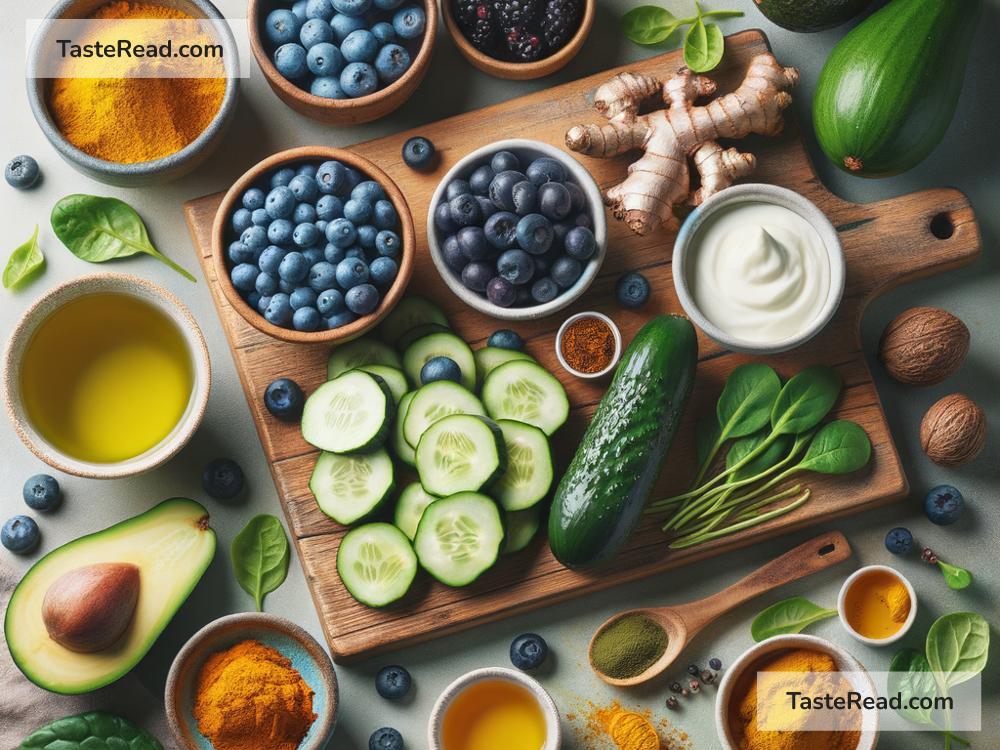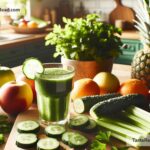Foods for Reducing Redness: Eating Your Way to Healthier Skin
Redness on the skin can be embarrassing, uncomfortable, and sometimes even painful. Whether it’s caused by rosacea, acne, irritation, or an allergic reaction, many people struggle to find solutions for calming their skin. While creams and treatments can help, the foods you eat also play a big role in improving your skin health. In fact, certain foods can help reduce inflammation and redness naturally.
If you’re looking for simple ways to calm irritated skin, what you eat is a great place to start. Let’s dive into some of the best foods that may help reduce redness and promote a glowing, healthy complexion.
Why Does Skin Become Red?
Before we talk about foods, it’s helpful to understand what causes redness. Red skin is often the result of increased blood flow to certain areas of the face. This happens because of inflammation, which is your body’s natural response to irritation, injury, or infection. Redness can also be caused by harsh skincare products, sunburn, allergies, or underlying conditions like rosacea or eczema.
The good news is that many foods have anti-inflammatory properties that can soothe your skin. By reducing inflammation, these foods may help calm redness and improve your overall skin health.
Foods That Can Help Reduce Redness
Here’s a list of simple, everyday foods that can help your skin look and feel better:
1. Fatty Fish
Fatty fish like salmon, mackerel, and sardines are loaded with omega-3 fatty acids. These healthy fats are great for reducing inflammation in the body, including the skin. Omega-3s also strengthen the skin barrier, helping it hold onto moisture and fight irritation. Eating fatty fish regularly can help your skin look healthier and less red.
2. Green Tea
Green tea is packed with antioxidants, particularly one called “EGCG” (epigallocatechin gallate), which helps fight inflammation and reduce redness. Drinking green tea daily can soothe stressed skin and improve its appearance over time. You can also use cooled green tea as a gentle toner for your face!
3. Cucumber
Cucumbers are rich in water, vitamins, and compounds that calm irritated skin. Their refreshing nature makes them excellent for reducing redness. You can eat cucumbers or apply slices directly to your skin for instant cooling relief. Cucumber juice also works well in homemade face masks.
4. Oats
Oats aren’t just good for breakfast—they’re amazing for your skin, too! When consumed, oats help reduce inflammation. You can also use oats in a skincare routine. Colloidal oatmeal (oats ground into a fine powder) is often used in soothing baths or creams to calm itchy, red skin caused by eczema or irritation.
5. Sweet Potatoes
Sweet potatoes are full of beta-carotene, a nutrient your body turns into vitamin A. This vitamin is crucial for healthy skin and can reduce inflammation. Sweet potatoes also contain antioxidants that help repair damaged skin cells and improve your complexion.
6. Avocados
Avocados are rich in healthy fats, vitamins E and C, and antioxidants, which all work together to reduce redness and inflammation. Eating avocados regularly can improve your skin’s hydration and elasticity, making it less prone to irritation.
7. Turmeric
Turmeric is a golden-yellow spice that has been used for centuries as a natural remedy for inflammation. Its active ingredient, curcumin, has powerful anti-inflammatory properties. Adding turmeric to your meals (or drinking golden milk) could help calm irritated skin.
8. Berries
Blueberries, strawberries, and raspberries are rich in antioxidants that fight inflammation and help repair skin damage. Their vitamins also promote healthy collagen production, which can strengthen your skin and reduce redness.
9. Nuts and Seeds
Almonds, walnuts, sunflower seeds, and chia seeds provide essential nutrients like vitamin E, zinc, and omega-3 fatty acids. These nutrients work to reduce inflammation and protect your skin from free radicals, which can worsen redness and irritation.
10. Hydrating Foods
Foods with high water content—like watermelon, celery, and lettuce—can replenish moisture in your skin. Staying hydrated helps your skin recover from dryness and irritation, reducing redness over time.
11. Dark Leafy Greens
Spinach, kale, and other dark leafy greens are packed with vitamins (like A and C) and antioxidants. These nutrients promote healthy skin and fight inflammation. Plus, leafy greens help detoxify your body, which can lead to clearer skin.
12. Probiotic-Rich Foods
Foods like yogurt, kefir, and kimchi contain probiotics that support gut health. A healthy gut is linked to healthier skin. Probiotics can also reduce inflammation, which helps with redness.
Tips for Healthy, Redness-Free Skin
- Drink plenty of water: Staying hydrated keeps your skin happy.
- Limit spicy or processed foods: These can trigger irritation or redness for some people.
- Avoid too much sugar or alcohol: They can cause inflammation in the skin.
- Consult a dermatologist if needed: If redness persists, seek professional advice.
Conclusion
Eating the right foods can do wonders for your skin. By adding anti-inflammatory ingredients like fatty fish, berries, cucumbers, and green tea to your diet, you can help reduce redness naturally. Combined with proper skincare and hydration, these healthy foods can make a big difference in the way your skin looks and feels.
Remember, your skin reflects what’s happening inside your body. Treat your body with care, and your skin will thank you!


